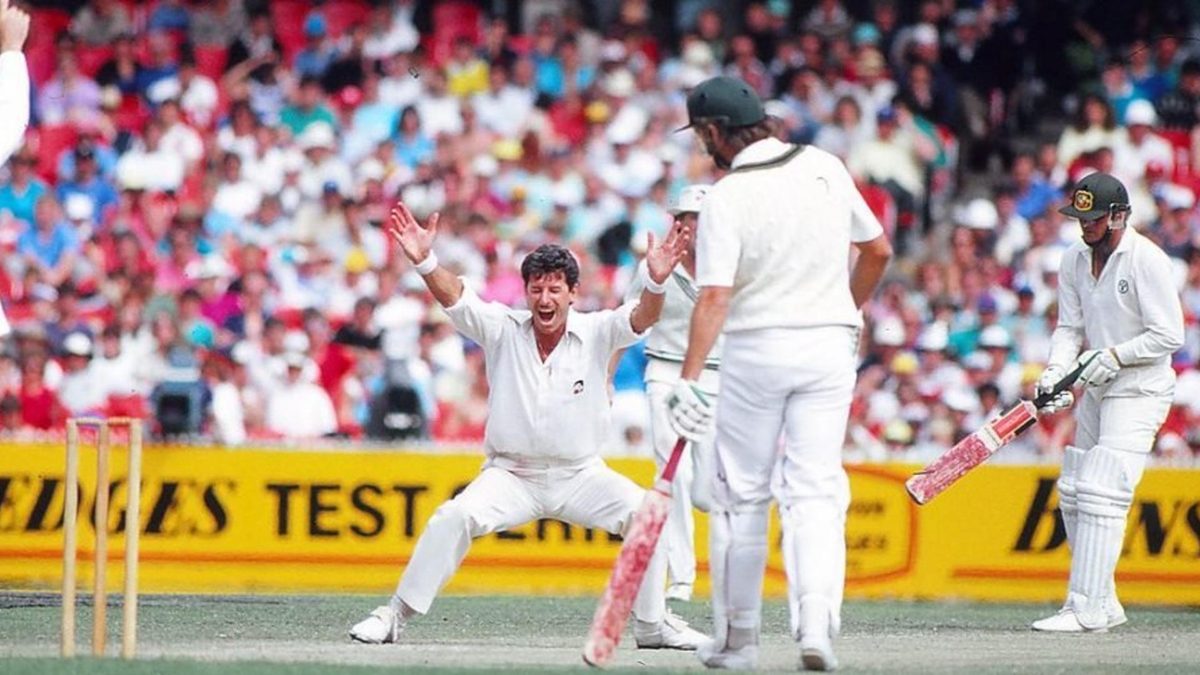
With the aid of a new training technique, Richard Hadlee was primed to finally take down Australia. Jo Harman tells the tale of how the legendary New Zealand seam bowler earned his side a famous series win over their Trans-Tasman rivals in 1985/86.
First published in issue 17 of Wisden Cricket Monthly
Australia had been unaccommodating neighbours since New Zealand became a Test nation in 1930, only hosting them on two occasions over the next 55 years, for a grand total of six Test matches. The justification, so the Aussies said, was that the two sides were mismatched; the Kiwis simply didn’t have the quality to compete.
However, by the time New Zealand crossed the Tasman in late 1985, the balance had begun to shift. Under the captaincy of Geoff Howarth the former minnows had claimed the notable scalps of West Indies, England and Pakistan on home soil, as well as defeating Sri Lanka overseas – only the second series win outside of New Zealand in their history.
Australia, meanwhile, had suffered three series defeats on the bounce, including a 3-1 Ashes humbling in the English summer of 1985, and lost several players to the rebel tour of South Africa. With New Zealand having bloodied the nose of their neighbours during a drawn series in 1982, this was their opportunity to land a killer blow.
With Howarth sacked a few months earlier after an extended slump in form with the bat, the tour was Jeremy Coney’s first assignment since being named captain. His star player, the prolific seam bowler Richard Hadlee, wasn’t overly impressed with the appointment.
[breakout id=”1″][/breakout]
“Coney as New Zealand captain? I wasn’t too convinced,” wrote Hadlee in his 1989 autobiography Rhythm and Swing. “New Zealand had a magnificent run of Test results while Coney was captain… But my lasting impression of Coney as a captain will always be of a leader who operated by remote control.”
Hadlee, who it should be acknowledged had a fractious relationship with Coney (at one stage teammate John Wright had to act as a go-between for the pair on the field because they refused to speak to each other), instead credited Glenn Turner, the best batsman New Zealand had produced up until that point and the team’s cricket manager, with masterminding the success that followed. That began with Turner’s ‘rubbish-bin theory’ in the lead-up to the first Test at Brisbane.
“Bowling and bowling in the nets isn’t for me, unlike many other players,” wrote Hadlee. “But before this Test I needed more work. For 40 minutes I stuck at it, working with Glenn Turner in a session designed to get me bowling from as close to the stumps as I possibly could. Turner formulated the rubbish-bin theory; the rubbish bin was the ‘umpire’ and we worked out a method of placing the bin/umpire back from the stumps to give me the optimum chance of bowling wicket to wicket. That was the secret. We’d hatched a vital component in the match plan for the Australians.”
[breakout id=”0″][/breakout]
Hadlee describes a “dream-like quality” to the first morning at The Gabba as Coney won the toss and put Australia into bat with low cloud cover and the mercury rising. Hadlee and his new-ball partner, the metronomic Ewen Chatfield, were ideally suited to exploit the muggy, swing-friendly conditions.
When bad light brought an early close to a rain-affected first day, the hosts were 146-4, with Hadlee taking all four. Well rested, and with conditions still in his favour, he decimated Australia the next morning, finishing with figures of 23.4-4-52-9 – the best since Jim Laker’s world-record haul in 1956.
“This was a freak happening,” Hadlee recalled. “I swear the ball talked throughout that innings; I’ve never seen a ball behave and respond the way that one did.”
Martin Crowe and John Reid’s centuries – and a sprightly 54 from Hadlee – ensured a huge lead before the talismanic all-rounder wreaked havoc again, taking six wickets to finish with 15 overall in an innings victory. “If ever a Test was made in heaven, this was it,” said Hadlee.
[breakout id=”2″][/breakout]
Australia fought back with a four-wicket victory at Sydney – a defeat which Hadlee attributed to a “number of miscalculated decisions” on Coney’s part, including not bowling him at the appropriate time – but still couldn’t contain New Zealand’s swing king, who continued his superb form with seven more wickets.
A slowish pitch for the deciding Test at Perth again played into New Zealand’s hands, as Hadlee and Chatfield shared eight wickets to dismiss Australia for 203 on the first day. And after Crowe’s patient 71 gave the Kiwis a first-innings lead of 96, Hadlee’s fifth five-wicket haul in six innings set the tourists up for a historic first-ever series victory against their rivals. His final series haul of 33 was the most in a three-Test series since Sydney Barnes in 1912. No one has bettered it since.
It proved a watershed victory for New Zealand, who defeated Australia at home and England away in their next two series before holding the Windies to a 1-1 draw in 1987. For Hadlee, who in 1990 became the first bowler to take 400 Test wickets, it was the zenith of his career.
“The entire series was an expression of New Zealand Test cricket’s total evolution,” he wrote. “It was quite clearly my peak as a Test bowler, the series in which I proved to myself that I could perform consistently in any conditions. I’d had success on other tours before but this series was a revelation to me. I felt I’d moved up to another plane.”








